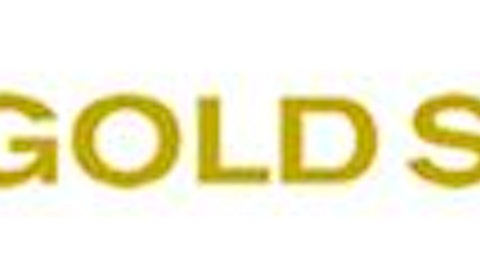![]() For months now, the bond market has been difficult for income investors. Risks are high when rates are low, and the sudden move up in interest rates has pushed bond prices down. With rates having been so low for an extended period of time, investors are risking several years’ worth of income if they hold bond funds as rates rise.
For months now, the bond market has been difficult for income investors. Risks are high when rates are low, and the sudden move up in interest rates has pushed bond prices down. With rates having been so low for an extended period of time, investors are risking several years’ worth of income if they hold bond funds as rates rise.
Bond prices fall when interest rates rise because older bonds making lower interest payments will need to remain competitive in the market.
The relationship between losses and interest rates might be easiest to see in iShares Barclays 20+ Yr Treas.Bond (ETF) (NYSEARCA:TLT) because bonds with more than 20 years to maturity will show the largest reaction to interest rates.

iShares Barclays 20+ Yr Treas.Bond (ETF) (NYSEARCA:TLT) is expected to lose about 16.7% for each 1% rise in interest rates. This is determined by the duration of the bond or the bond fund. This value can be calculated, but most ETF sponsors provide the information on their websites. Bonds in iShares Barclays 20+ Yr Treas.Bond (ETF) (NYSEARCA:TLT)’s portfolio mature in an average of 27 years, so we can use the interest rate on 30-year bonds to test this theory.

The interest rate on the 30-year bond moved up by 1% between May 1 and Aug. 16. iShares Barclays 20+ Yr Treas.Bond (ETF) (NYSEARCA:TLT) declined 16.4% in price over that time. While the size of the price drop is not exactly equal to the duration, it is close and provides investors with an estimate of the damage their portfolio will suffer as rates rise.
To find an estimated duration for your portfolio, you will want to find the weighted average duration of your holdings.
For example, if you hold 50% of your fixed-income assets in iShares Barclays 20+ Yr Treas.Bond (ETF) (NYSEARCA:TLT), 30% in iShares Lehman 10-20 Yr Tresry Bond(ETF) (NYSEARCA:TLH) and 20% in iShares Barclays 7-10 Year Trasry Bnd Fd (NYSEARCA:IEF), the math is shown in the table below.
Every fixed-income investor should complete this review to help quantify the risk they face. In this example, the investor would face a capital loss equivalent to 5.2 years’ worth of income. In those terms, the risk of principal might not be worth the reward of interest payments to many investors.
To determine how many years of income are at risk, we must calculate the income from the portfolio. The next table shows the income based on a $10,000 portfolio allocated 50% to iShares Barclays 20+ Yr Treas.Bond (ETF) (NYSEARCA:TLT), 30% to iShares Lehman 10-20 Yr Tresry Bond(ETF) (NYSEARCA:TLH) and 20% to iShares Barclays 7-10 Year Trasry Bnd Fd (NYSEARCA:IEF).
Since the portfolio value is divided into these three funds, we can find the income by multiplying the yield by the weight. For TLT, for example, this gives us income of $146 ($10,000 portfolio with 50% in TLT, or $5,000, multiplied by 2.92%).
We calculated the duration of this portfolio as 12.8, meaning the $10,000 portfolio will lose $1,280 with a 1% rise in interest rates. The risk can then be defined in years of interest, with $1,280 being equal to 5.2 years’ worth of interest payments. ($1,280 / $247.30 = 5.18).
It is important to understand the risk of any position. I believe that risk is so important that I designed the 26-week rate of change (ROC) system, an ETF trading system built to reduce risk. This can lead to extended periods of time in cash when risks are high. Currently, the system is signaling a move to cash in the bonds allocation.
iShares iBoxx $ High Yid Corp Bond (ETF) (NYSEARCA:HYG) has a duration of 4.3. The ETF lost about 4.9% as interest rates rose by 1%. HYG carries some degree of extra risk because high-yield bonds trade with a high degree of correlation to stocks. When investments are highly correlated with each other, they tend to move in the same direction over time.
iShares Barclays 20+ Yr Treas.Bond (ETF) (NYSEARCA:TLT) is negatively correlated with SPDR S&P 500 ETF Trust (NYSEARCA:SPY) while HYG has a positive correlation to SPY. Investors using HYG or similar investments as income investments should understand that risk. This risk is not just theoretical. In the 2008 bear market, iShares iBoxx $ High Yid Corp Bond (ETF) (NYSEARCA:HYG) suffered a loss while TLT provided a gain.
The 26-week ROC system is telling us that there is significant risk in bonds. The trend toward higher interest rates is now firmly established and could continue for some time. It is probably better to avoid large losses than give back years’ worth of income as bond prices fall.
After selling iShares iBoxx $ High Yid Corp Bond (ETF) (NYSEARCA:HYG), the 26-week ROC system portfolio will be holding four positions:
$1,000 Per Month Trading System
You could collect $1,000 or more per month without buying a single stock. Click here to learn how…




